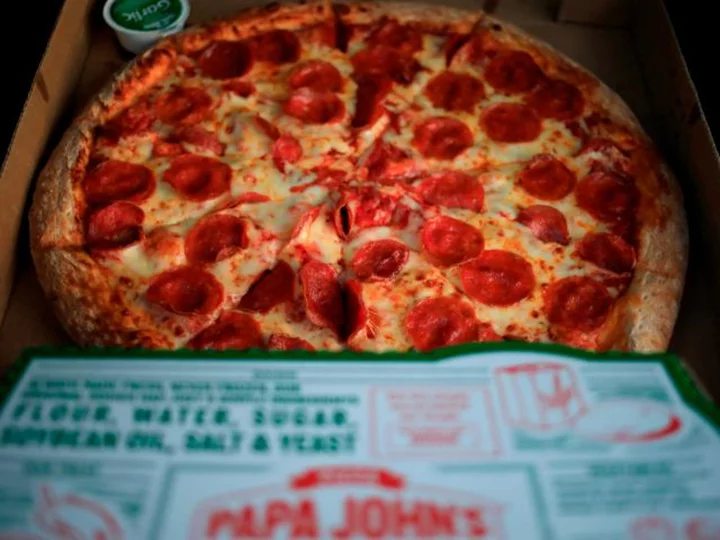Consumers are pulling back on discretionary spending, and Papa Johns is taking a hit.
Sales at North American locations open at least a year fell 1% in the quarter ending on June 25, compared to the same period last year, dragged down by high prices at the chain's franchise locations.
"Some of the pricing ... had gotten out in front of where the consumer was willing to spend," said Papa Johns CEO Rob Lynch during a Thursday analyst call discussing the quarterly results. "April was the worst month that we've had since I've been at Papa Johns," in terms of sales at locations open at least a year, he said. Lynch joined Papa Johns in 2019.
Franchise operators have over the past year "been increasing their prices at a faster rate than our company-owned restaurants" to preserve profit margins as inflation has surged, Lynch said. Inflation has been cooling in recent months, but hit a 40-year high in June of last year. "As a result, they have experienced a larger decline in transactions relative to our company-owned restaurants this past quarter," he said.
The vast majority, roughly 2,900 out of about 3,400 total North American Papa Johns restaurants, are franchised, according to the company. In general, franchise operators are able to set menu prices themselves, though the company may set a cap on pricing for certain promotions.
At company-owned restaurants open at least a year, sales grew in the quarter, but not enough to offset declines in franchised spots. The chain's total sales were down 2% year over year in the second quarter.
Over the past few years, companies have been hiking prices to promote or protect their own margins as their own costs have gone up. For a while, they said, many shoppers were surprisingly resilient, still buying despite the high prices.
But now, they're pushing back -- and not just at Papa Johns.
Prices of products made by Kraft Heinz, which include Lunchables, Capri Sun, Philadelphia cream cheese, Oscar Mayer, Kraft Mac and Cheese, Velveeta and other brands, are up about 11% this year.
Sales volumes fell in the second quarter, and cold cuts, cream cheese and kids' single-serve beverages are losing share to discounted or lower-priced competitors, Kraft Heinz CEO Miguel Patricio said this week.
"We priced above the market," Patricio said in a discussion of the company's second-quarter results. "Here's the good news — the pricing is done." At Kraft, "we are taking a disciplined and surgical approach to protecting our profit dollars in certain categories," Patricio said, noting that losing share "was a headwind we expected."
During a July call with analysts, Coca-Cola CEO James Quincey said his company has "seen some willingness to switch to private-label brands in certain categories" in the US and parts of Europe. Consumers have been trading down to store brands in those regions, he said at the time, noting that the trend applies largely to water and juices.
Kellogg has also seen volumes fall due to high prices.
"Volumes were in line with our expectations," Kellogg's CEO Steven Cahillane said during an analyst call Thursday. "It doesn't mean we're pleased about it, but take the level of pricing that we've taken — you have to see elasticities moving higher," he said, referring to how readily people alter their spending habits when prices change.
Still, higher prices still led to higher sales in the quarter. Kellogg's net sales increased about 5% in that period, year-over-year.
At Papa Johns, leadership is working to spark sales at its franchise locations.
Part of the plan is to encourage franchise operators to be strategic with discounts, Lynch said. "We're not just going in and saying, 'Hey, you have to take your prices down on your regular menu price,'" he said. "It's how they execute their e-deals and the discounts that they offer ... through the digital channels."
Lynch added that pizza sellers are at something of a disadvantage when it comes to pricing compared to other fast food sellers because they typically don't have drive-thrus.
"When you pull into a drive-thru and you look at the menu board, the price that's on the menu board is what you pay," he said. "This model that we deal with here in pizza is more of an e-commerce model where it's planned ahead and there's shopping that goes on."

